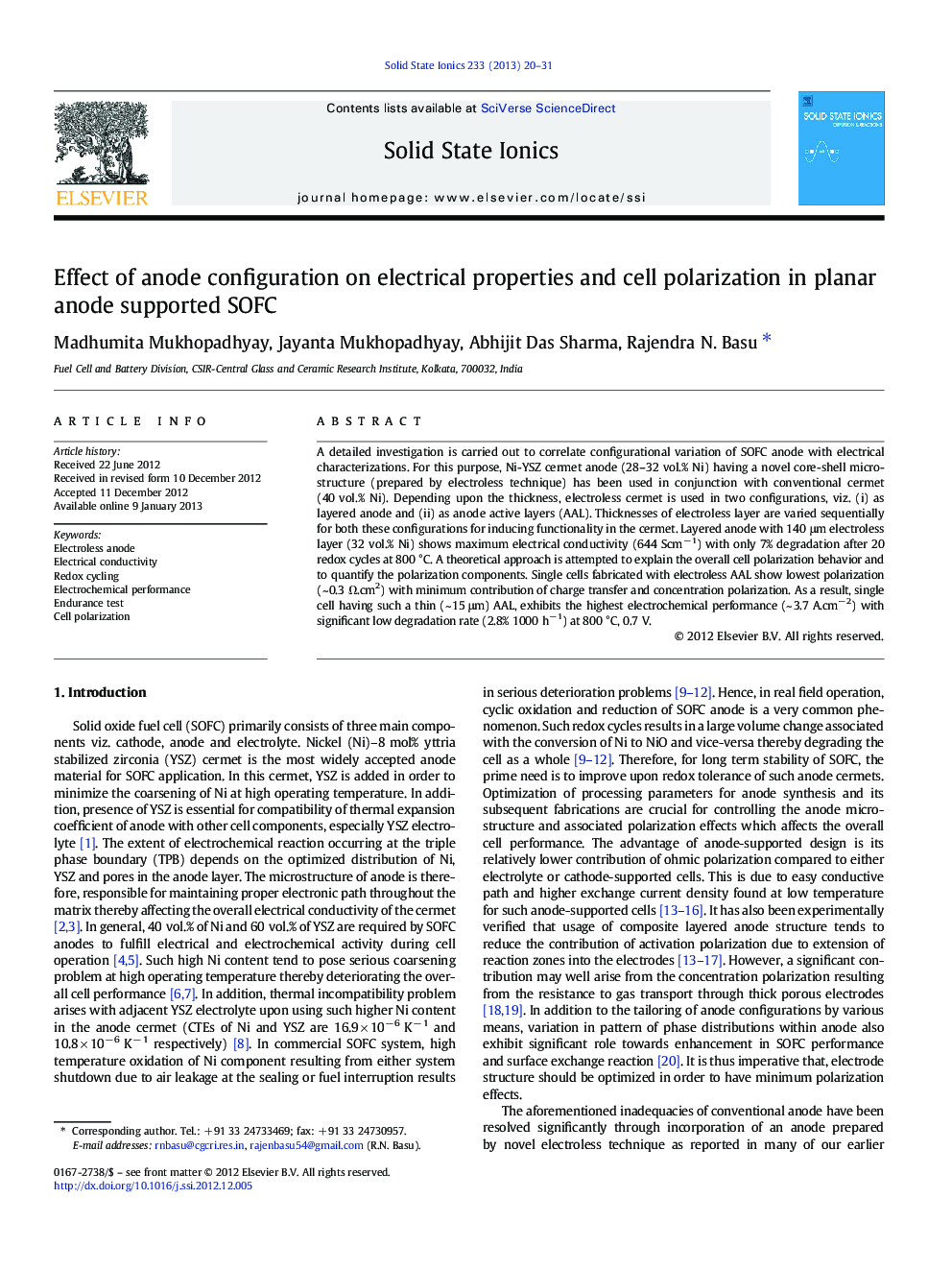| Article ID | Journal | Published Year | Pages | File Type |
|---|---|---|---|---|
| 1295949 | Solid State Ionics | 2013 | 12 Pages |
A detailed investigation is carried out to correlate configurational variation of SOFC anode with electrical characterizations. For this purpose, Ni-YSZ cermet anode (28–32 vol.% Ni) having a novel core-shell microstructure (prepared by electroless technique) has been used in conjunction with conventional cermet (40 vol.% Ni). Depending upon the thickness, electroless cermet is used in two configurations, viz. (i) as layered anode and (ii) as anode active layers (AAL). Thicknesses of electroless layer are varied sequentially for both these configurations for inducing functionality in the cermet. Layered anode with 140 μm electroless layer (32 vol.% Ni) shows maximum electrical conductivity (644 Scm− 1) with only 7% degradation after 20 redox cycles at 800 °C. A theoretical approach is attempted to explain the overall cell polarization behavior and to quantify the polarization components. Single cells fabricated with electroless AAL show lowest polarization (~ 0.3 Ω.cm2) with minimum contribution of charge transfer and concentration polarization. As a result, single cell having such a thin (~ 15 μm) AAL, exhibits the highest electrochemical performance (~ 3.7 A.cm− 2) with significant low degradation rate (2.8% 1000 h− 1) at 800 °C, 0.7 V.
► Anodes are engineered using a novel electroless cermet having variable thickness. ► Correlation among electrical conductivity and configurational variations of anode. ► 15 μm electroless AAL augments the cell performance to 3.7 Acm− 2 at 800 °C and 0.7 V. ► Least cell polarization (~ 0.3 Ω.cm2) is found with 15 μm electroless AAL. ► Electroless AAL substantially lowers charge transfer & concentration polarizations.
